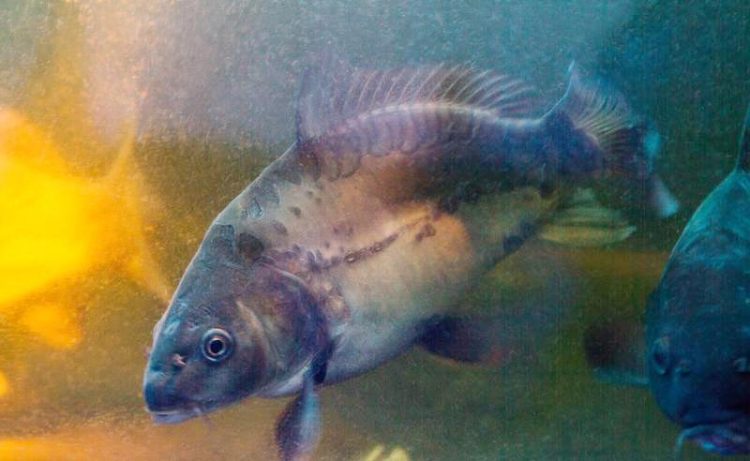Defying the koi herpes virus

With the help of the improved diagnostics, infected animals can be reliably identified and separated from healthy ones.
Around half of all fish today come from aquaculture, since the overfishing of the oceans has caused this market to grow steadily. For fishery yield, the health of the fish is crucial.
After the trout, the carp is the most important aquaculture fish in Germany. Large carp farms can be found in the Saxon Upper Lusatia area, although Franconia and the Upper Palatinate are also considered traditional carp regions with numerous smaller farms. For years, breeders across Germany have been fighting against the koi herpes virus that is continuing to spread and causing the notifiable KHV infection. During an outbreak of the disease in Saxony from 2003 to 2005, nearly all the animals died in some fish farms; 28 tons of carp were lost.
Improved diagnostics using cell cultures
“The KHV infection cannot be treated, so it is important to prevent it as far as possible. Together with our project partners, we have developed improved diagnostics with which infected animals can be identified reliably. The more quickly the sick carp are separated, the greater the chance is of protecting the other fish from KHV,” says Dr. Sebastian Rakers, who heads the working group Aquatic Cell Technology and Aquaculture at the Fraunhofer Research Institution for Marine Biotechnology and Cell Technology EMB in Lübeck, Germany.
Previously, the koi herpes virus had been detected by PCR tests that made the pathogen DNA visible in a tissue sample. “If not enough virus DNA is present in the sample, though, you get false negative results with PCR.”
Another significant disadvantage of the PCR tests: they do not allow a conclusion to be reached about how infectious the virus is, since the genomic evidence does not necessarily correspond with the detection of reproducible virus.
“With our improved and somewhat newly developed methods using cell cultures, we can determine how many virus particles are present per cell – therefore, also how strongly the virus is replicated in the cells.” As a result, the cell cultures serve not only as an additional diagnostic tool, but also to understand the virus more thoroughly.
Vaccine development is well on its way
Rakers and his team have managed to grow cell cultures that can replicate significantly more viruses per cell than can traditional cultures. “So far, the best possible titer, which is the number of infectious viruses per milliliter that is needed to kill half of the cells, was 106. We have been able to increase the virus titer to 108, and through further optimization measures, we hope to reach a titer of 1010.”
This is not only important for improved diagnostics; it is also a prerequisite for the development of a highly-effective vaccine against KHV. “Our project partners from the Friedrich Loeffler Institute (FLI), the Chair of Bioprocess Engineering at the Friedrich Alexander University of Erlangen-Nuremberg and the University of Veterinary Medicine Hanover are working intensively on vaccine development and have already been able to significantly reduce mortality in the Asian KHV line.”
The joint project “KHV-Vacc” is funded by the German Federal Ministry of Nutrition and Agriculture (BMEL), due to a decision of the German Bundestag concerning the Federal Institute for Agriculture and Food (BLE), Project Number 2815HS011.
https://www.fraunhofer.de/en/press/research-news/2018/March/defying-the-koi-herp…
Media Contact
All latest news from the category: Agricultural and Forestry Science
Newest articles

NASA: Mystery of life’s handedness deepens
The mystery of why life uses molecules with specific orientations has deepened with a NASA-funded discovery that RNA — a key molecule thought to have potentially held the instructions for…

What are the effects of historic lithium mining on water quality?
Study reveals low levels of common contaminants but high levels of other elements in waters associated with an abandoned lithium mine. Lithium ore and mining waste from a historic lithium…

Quantum-inspired design boosts efficiency of heat-to-electricity conversion
Rice engineers take unconventional route to improving thermophotovoltaic systems. Researchers at Rice University have found a new way to improve a key element of thermophotovoltaic (TPV) systems, which convert heat…



